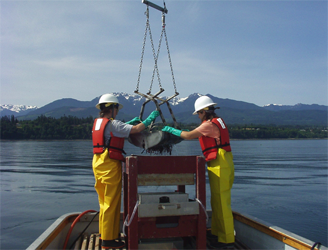Cleaning up contaminated sediment usually involves either capping the area, dredging the waterway to remove the pollution, or waiting for natural processes to do the clean-up work without human intervention. The last option involves microbes such as Cyclasticus pugetii, a bacterium found in marine sediments around the world. C. pugetti breaks down aromatic hydrocarbons, most of which are toxic pollutants. How it does this is a mystery researchers want to solve in order to find alternative ways of thinking about bioremediation, and they’re hoping sequencing the bacterial genome will provide answers.

Photo: Courtesy of Washington State Department of Ecology
Principal Investigators: Russell Herwig (University of Washington)
Program: CSP 2009